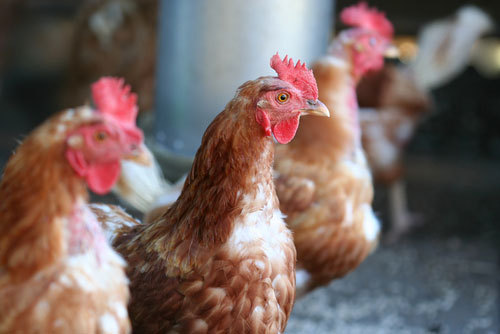New Bird Flu: What the First 82 Cases Reveal

Although health officials still haven't confirmed the species of animal that is the source of the H7N9 bird flu outbreak in China, most people who fell ill had contact with birds or pigs, according to a new report.
The report, published online Wednesday (April 24) in the New England Journal of Medicine, describes an investigation of the 82 people who were infected with the virus from the beginning of the outbreak (in February and March) through April 17.
So far, health officials know of 108 people who've fallen ill with the new strain of bird flu, 22 of whom have died, according to the World Health Organization.
The new report says that of the 77 patients who could report whether they had been in contact with animals, 59 patients, or 77 percent, reported recent exposure to animals, the report said. Most (76 percent) had contact with chickens (including four who were poultry workers), while 20 percent reported exposure to ducks, and 7 percent to swine, the report said.
The researchers said they suspect the source of H7N9 infections to be poultry. This agrees with the result of a study published today, which points to poultry markets as the likely source of H7N9 bird flu infections.
Other findings from the investigation of the 82 cases include:
- H7N9 has a high death rate: About 21 percent of patients who fell ill with the virus died. That's a higher death rate than that of severe acute respiratory syndrome (SARS), which killed about 9.6 percent of those who contracted the virus between 2002 and 2003. However, the new bird flu is so far not as deadly as the H5N1 bird flu virus, which caused an outbreak in 2003 and 2004 and has a mortality rate of 60 percent.
- It takes about four days to become very sick: The average time between onset of H7N9 flu symptoms and hospitalization was 4.5 days, the researchers said. That's longer than the time between the onset of symptoms and hospitalization for the H5N1 strain of bird flu, which is about seven days, according to earlier studies.
- Most patients are male: Seventy-three percent of these cases in the study were male. Patients ranged in age from 2 to 89, but 46 percent of cases occurred in people ages 65 and older.
- No confirmed human-to-human transmission: Nearly all of the 82 cases were not conntected, and they occurred across six regions of China. In two cases, health officials could not rule out the possibility that sick individuals caught the virus from family members. However, there is no evidence of sustained human-to-human transmission.
More investigation is needed not only to identify patients who may be sick with the virus, but also to determine risk factors for becoming ill (some people may not get sick), the researchers said.
Get the world’s most fascinating discoveries delivered straight to your inbox.
A ban on the sale of poultry in market stalls, disinfection of markets or market closures may need to be considered to prevent the spread of the virus from animals to people, the researchers said.
Pass it on: Aninvestigation of 82 people infected with the new bird flu virus shows most who fell ill had contact with birds or pigs.
Follow Rachael Rettner @RachaelRettner. Follow MyHealthNewsDaily @MyHealth_MHND, Facebook & Google+. Originally published on MyHealthNewsDaily.

Rachael is a Live Science contributor, and was a former channel editor and senior writer for Live Science between 2010 and 2022. She has a master's degree in journalism from New York University's Science, Health and Environmental Reporting Program. She also holds a B.S. in molecular biology and an M.S. in biology from the University of California, San Diego. Her work has appeared in Scienceline, The Washington Post and Scientific American.


